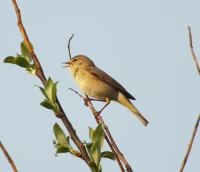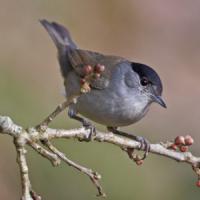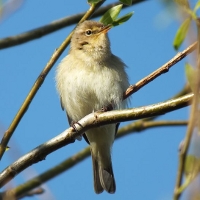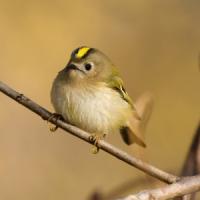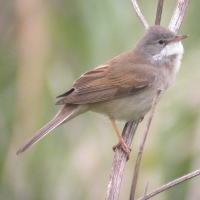- Home
- FAQs
- Customer Video Gallery
- Customer Photo Gallery
- Bird Facts
- Bird Food Blog
- Bird Information
- Feeding Advice
- Small Animal Information
- A to Z of Guinea Pigs
- A to Z of Hamsters
- A to Z of Rabbits
- Basic Care for Guinea Pigs
- Basic Care for Hamsters
- Basic Care for Rabbits
- Basic care for Chinchillas
- Basic care for Ferrets
- Basic care for Gerbils
- Basic care for Mice
- Basic care for Rats
- Buying a Healthy Small Animal
- Does your Reptile need a Licence
- Equipment for Ferrets
- Equipment for Hamsters
- Equipment for Mice
- Equipment for your Chinchilla
- Equipment for your Gerbil
- Equipment for your Guinea Pig
- Equipment for your Rabbit
- Keeping a House Rabbit
- Dog Information
- Cat Information
- Customer Information
- Fat Balls
- Suet Pellets
- Straights
- Seed Mixes
- Suet Treats
- Mealworms
- Bird Feeders
- My Account
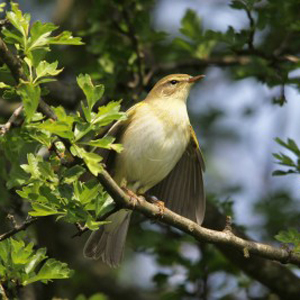
| Scientific Name | Phylloscopus trochilus |
| Breeding | April-May |
| Fledge Days | 13-16 |
| Incubation Days | 13 |
| Lifespan | 2 years |
| Number of Clutches | 1-2 |
| Number of Eggs | 3-9 |
| Size | 10-11.5 cm |
| Weight | 10g |
| Wingspan | 16-22 cm |
Bird Family : Warblers and Allies
Willow Warbler Facts - Information About Willow Warbler
Willow Warbler - Phylloscopus Trochilus
The Willow Warbler is one of two similar looking Warblers that spend the summer in the UK. The other, the Chiffchaff is very similar in plumage, but with care can be separated.
Willow Warblers start to arrive in the UK in late March – April, arriving several weeks later than Chiffchaff.
Identification:
Adult
- The Willow Warbler is the commonest British breeding ‘Phylloscopus’ type Warbler, adult sexes and young birds are all similar in plumage and cannot be identified in the field, males can be easily be separated in spring as they can be seen and heard singing.
- Song is the easiest way to separate this species from Chiffchaff.
- Willow Warblers are small birds, slightly larger than the similar Chiffchaff, about the size of Blue Tit, around 12 cm from tip of tail to tip of bill.
- The upperparts and tail are bright olive green; underparts are pale with a yellowish wash, brighter than Chiffchaff.
- The Willow Warbler appears longer and more attenuated than Chiffchaff due to its longer wings.
- The face is yellow, olive, again brighter than Chiffchaff.
- It shows a thin dark eyestripe on a pale face and a brighter yellower supercilium.
- The dark eye is surrounded by a less obvious pale eyering.
- The legs are the key to identification, they are pale horn coloured combined with the above features and a short dark bill with pale lower mandible you will be well on the way to a positive ID!
- Legs on Willow Warbler are pale, be careful of shadow!
Bill, legs pale, eye black.
Juvenile
- Juveniles appear from May onwards and are identical to adults; however the plumage will appear brighter as the feathers are fresh.
- Legs and bill pale, eye black.
Status and Distribution
The Willow Warbler is an abundant breeding summer visitor, it arrives from late March onwards and departs September. The breeding population is around 2 million pairs, it breeds throughout Britain and Ireland.
Habitat/Food
Willow Warblers occur in many habitat types throughout the UK, woodlands, parks, gardens, hedgerows, indeed any woodland type habitat with suitable scrub. The Willow Warbler feeds exclusively on Insects.
Song/Call
Song is a very sweet melodic whistle, descending in pitch, ‘ see see see too too too seweee seweee seweee tootootoo ’ repeated many times.
Call is a quick, happy ‘hewiit’, two syllables, rising in pitch.




